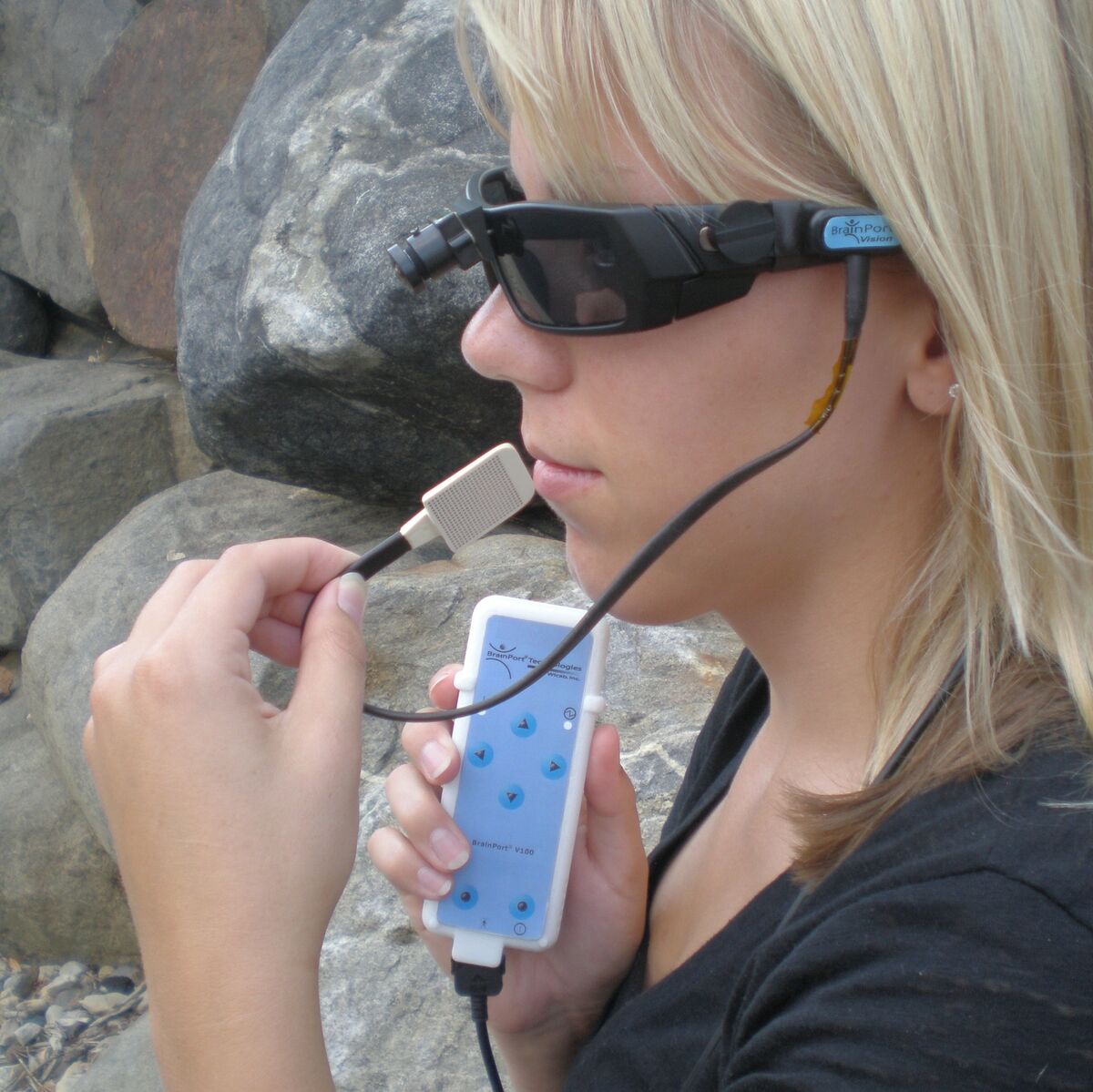A tasty solution?
A common conception about blind or partially sighted people is that their other senses are more acute than their sighted counterparts, heightened to compensate for their lack of sight, and allow them to function in their surroundings.
 Whether this is true or whether it’s simply a case of blind people using their senses more efficiently than the non-blind population remains to be seen; but two recent developments in the technology world are looking to exploit these other senses to help blind and visually impaired people interpret the world around them better.
Whether this is true or whether it’s simply a case of blind people using their senses more efficiently than the non-blind population remains to be seen; but two recent developments in the technology world are looking to exploit these other senses to help blind and visually impaired people interpret the world around them better.
One device helps blind people ‘see’ by using their tongues and has been approved by the U.S. FDA - Food and Drug Administration – meaning it’s effectively been given the green light to be used.
The BrainPort V100, cleared for blind people without sensitivity to light, will cost about $10,000. The device is a three-piece arrangement; a camera mounted upon sunglasses captures images, directs them through a controller held by the user and sends them to a 1-inch square device that sits on their tongue and stimulates their senses via its 400 stimulation points.
Robert Beckman, chief executive officer of Wicab Inc. who developed the device, told Bloomberg Business, "People are able to learn to interpret these patterns of bubbles or stimulation on their tongue to know what object is in front of them."
He was cautious in his optimism however, "We don’t want to create false hopes. They need to learn the technology and practice with it. It’s more akin to learning a new language than it is to ordinary perception."
Inexpensive it surely isn’t, which will likely limit it’s take up. It goes back to the age old notion of assistive technology being a form of legalised extortion; too expensive for the average person, but disabled people will sometimes take the gamble and compromise in paying over the odds if it may allow a greater level of independence or improvement in well-being.
It makes sense, then, to have a more cost effective solution, whereby the gamble is minimised. Another form of assistive technology is being developed at the University of Sussex, and the ultimate aim is to create a smartphone app version that is as far reaching as possible.
The technology currently being developed uses a Microsoft Kinect, worn on the user’s chest, to scan the surroundings in 3D, and a computer - in a backpack -translates this into sound which can be heard through bone conducting headphones, leaving the user’s ears free to use conventional sound cues in addition.
An object’s height dictates the tone of the sound and the distance of an object the volume, thereby creating a 3D soundscape of the surroundings. The team of researchers are aiming to take this much further however, with hopes of interpreting colours as well as shapes.
Professor Jamie Ward, Cognitive Neuroscientist at the University of Sussex, told BBC Click, "The other thing we're doing is to try and figure out what colours can be represented through sound, so we've figured out what red should be for instance, which is not a trivial problem.
"One of our end goals is to miniaturise this so it can be in, for instance, a mobile phone you would have in your lapel using the camera there. So already we're seeing that you can get depth cameras on mobile phones that don't use the rather clunky, long Kinect camera that we've been using so far."
This technology is still in its infancy, but with further development it has to potential to create a cost-effective assistive device meaning individuals don’t have to worry about paying an obscene sum due to their disability.
You can see the full feature on BBC Click here and from the link above at 08.45 into the video...
Image from Wicab via Bloomberg.
------------------------------
Sign up to comment and receive our weekly bulletin!
------------------------------
Like what you just read? Check out some more discussions on bespoken below...
Eye2TV - A solution for colour blind people
An interview with Neatebox creator Gavin Neate
Easily accessible, or not? That is the question.
Tags:
Replies to This Discussion
© 2025 Created by Gordon White.
Powered by
![]()